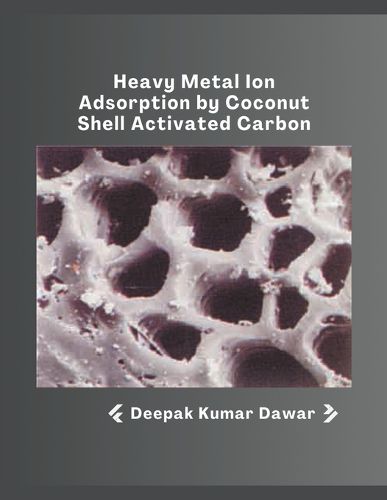Readings Newsletter
Become a Readings Member to make your shopping experience even easier.
Sign in or sign up for free!
You’re not far away from qualifying for FREE standard shipping within Australia
You’ve qualified for FREE standard shipping within Australia
The cart is loading…






This title is printed to order. This book may have been self-published. If so, we cannot guarantee the quality of the content. In the main most books will have gone through the editing process however some may not. We therefore suggest that you be aware of this before ordering this book. If in doubt check either the author or publisher’s details as we are unable to accept any returns unless they are faulty. Please contact us if you have any questions.
Adsorption is a process that occurs when a gas or liquid solute accumulates on the surface of a solid or a liquid (adsorbent), forming a molecular or atomic film (the adsorbate). Adsorption is operative in most natural physical, biological and chemical system and is widely used in industrial application such as activated charcoal, synthetic resins and water purification. Among these methods, adsorption is currently considered to be very suitable for waste water treatment because of its simplicity and cost effectiveness.
Adsorption is commonly used technique for the removal of metal ions from various industrial effluents. It is a physicochemical process in which dissolved molecules are attached to the surface of an adsorbent by physical or chemical forces. The substance which adsorbs another substance on its surface is called as adsorbent while the substance which itself get adsorbed on the surface of another substance is called adsorbate. All adsorption performance processes are depends on solid-liquid equilibria and on mass transfer rates. If the mass transfer is in opposite direction then it is called as Desorption.
Most adsorbents are highly porous materials, and adsorption takes place primarily on the walls of the pores or at the specific sites inside the particle. An adsorbent material must have a high internal volume, which is accessible to the components being removed from the solvent. Surface area and the distribution of area with respect to pore size are two very important factors in determining extent of adsorption. The overall rate of adsorption is controlled by the rate of diffusion of solute within the capillary pores of the adsorbent and varies with square root of the contact time with the adsorbent.
$9.00 standard shipping within Australia
FREE standard shipping within Australia for orders over $100.00
Express & International shipping calculated at checkout
This title is printed to order. This book may have been self-published. If so, we cannot guarantee the quality of the content. In the main most books will have gone through the editing process however some may not. We therefore suggest that you be aware of this before ordering this book. If in doubt check either the author or publisher’s details as we are unable to accept any returns unless they are faulty. Please contact us if you have any questions.
Adsorption is a process that occurs when a gas or liquid solute accumulates on the surface of a solid or a liquid (adsorbent), forming a molecular or atomic film (the adsorbate). Adsorption is operative in most natural physical, biological and chemical system and is widely used in industrial application such as activated charcoal, synthetic resins and water purification. Among these methods, adsorption is currently considered to be very suitable for waste water treatment because of its simplicity and cost effectiveness.
Adsorption is commonly used technique for the removal of metal ions from various industrial effluents. It is a physicochemical process in which dissolved molecules are attached to the surface of an adsorbent by physical or chemical forces. The substance which adsorbs another substance on its surface is called as adsorbent while the substance which itself get adsorbed on the surface of another substance is called adsorbate. All adsorption performance processes are depends on solid-liquid equilibria and on mass transfer rates. If the mass transfer is in opposite direction then it is called as Desorption.
Most adsorbents are highly porous materials, and adsorption takes place primarily on the walls of the pores or at the specific sites inside the particle. An adsorbent material must have a high internal volume, which is accessible to the components being removed from the solvent. Surface area and the distribution of area with respect to pore size are two very important factors in determining extent of adsorption. The overall rate of adsorption is controlled by the rate of diffusion of solute within the capillary pores of the adsorbent and varies with square root of the contact time with the adsorbent.